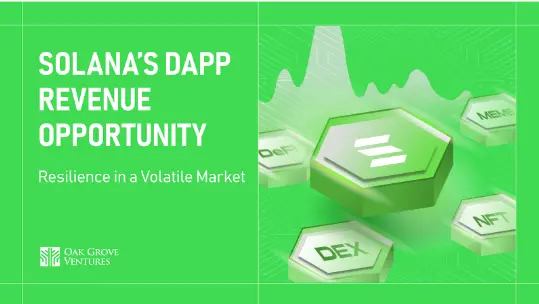AltLayer: A temporary execution layer solution for Rollups as an alternative application chain
Written by: AltLayer, “The Case for AltLayer”
Compiled by: FYJ, BlockBeats
This article provides a relatively complete case for AltLayer. The content in this article is the full version of a recent thread from AltLayer's official Twitter account, explaining the trend of popular dApps migrating from general-purpose chains to application-specific chains, and the fundamental principles behind the construction of AltLayer by the project team.
We are excited to build as popular dApps begin to transcend their native platforms. DefiKingdoms was the first project to transition from a dApp on Layer 1 to having its own application chain, operating as an Avalanche subnet.
Yuga Labs (the entity behind CryptoPunks) followed suit, announcing that they would shut down their contracts on Ethereum due to scalability issues faced during a highly anticipated NFT sale and seek to migrate the project to their own chain to enhance performance. Although the Apecoin community voted against leaving Ethereum, about 47% of the community still supported ApeChain.
Recently, dYdX, the largest decentralized derivatives trading platform on Ethereum, announced that their version 4 update will be built on a self-customized application chain, featuring its own set of validator nodes using the Cosmos SDK.
Each of the above dApps is highly popular among users, traders, and crypto enthusiasts. We believe that the trend of transitioning from general-purpose chains like Ethereum to application-specific chains will become the norm for mainstream dApps that ultimately aim to provide a better experience for users.
One of the main reasons for building application chains is performance issues. Ethereum has a shared block space, which leads to a popular dApp consuming a disproportionate amount of block space for itself, resulting in a poor experience for users of other dApps due to increased gas fees and settlement times.
dApps like DefiKingdoms, dYdX, and Yuga Labs demonstrate the necessity of having independent chain space owned by applications. Nowadays, these dApps can utilize some solutions such as Polkadot, Avalanche, and Cosmos SDK. However, these solutions come with trade-offs.
For instance, while some of these are completely permissionless, like Cosmos SDK, others are not, such as Avalanche's subnets, which follow a shared security model where each chain is protected by a set of general validators (i.e., Avalanche and Polkadot).
Although the Cosmos SDK ecosystem does not share security, each chain has its own set of validators. Imagine a Cosmos-style application chain protected by only a few validators; an attacker controlling 1/3 of them could halt the network.
Controlling 2/3 would cause the network to produce invalid blocks. Therefore, if the security of an application chain is not tied to a larger, more secure network (like Ethereum or other Layer 1s), the security of the application could be severely compromised.
Moreover, if a dApp does not achieve sufficient usage, the application chain may waste resources (physical or economic). For example, in the case of Avalanche, a dApp chain in the form of a subnet requires staking the main chain token, AVAX, to ensure economic security.
As a result, dApps that can hardly consume block space will ultimately occupy scarce economic resources that could be used to secure more utilized subnets.
On one hand, in the case of general-purpose chains (like Ethereum), more utilized dApps compete for block space with a large number of less utilized dApps. On the other hand, each dApp with its own chain ends up wasting resources.
Since existing methods and solutions present two opposing extremes, there is a need to design an architecture that can provide the best of both worlds.
Another key point to note is that some popular dApps do not require permanent dedicated block space but only need it for a short period during anticipated demand spikes. For example, the Yuga Labs case involving NFT minting is a short-term event.
In fact, most NFT minting events conclude within days (often within hours or even minutes), during which user activity is very high and requires elastic scaling solutions.
Once the minting event ends, user activity quickly slows down to a level that can be easily managed.
Building an application chain that does not see much activity after a hot event is also a waste. Additionally, once an application chain is established, the project will be isolated from other NFT projects in the market, lending, etc., thus breaking composability.
The ideal solution is to structure a temporary execution layer protected by Layer 1, which developers can launch before minting events, mint on the execution layer, and once minting is complete, settle assets on Layer 1, at which point the execution layer dissolves.
The key here is that this transient execution layer must be scalable and must connect to a secure Layer 1. At AltLayer, we are building a transient execution layer system powered by optimistic rollups (the state-of-the-art scaling technology pioneered by Arbitrum and Optimism).
AltLayer can be seen as a separate optimistic rollups system that derives security from an underlying Layer 1 (such as Ethereum) or Layer 2 (such as Arbitrum and Optimism), with each rollup tailored for specific applications.
AltLayer introduces a new concept of one-time execution layers. With AltLayer, dApp developers can anticipate demand spikes:
1) Launch fast and scalable rollups;
2) Use it as needed;
3) Settle it on Layer 1 through "life termination."
This makes the entire system highly resource-optimized. The execution layer and its resources are only called upon when a dApp anticipates that Layer 1 cannot handle a large demand, and once demand gradually decreases, the dApp can revert to Layer 1.
Application chains also disrupt composability, leading to isolated dApps that cannot connect with users of other dApps, thus limiting the functionality that dApps can offer. AltLayer allows developers to regain composability after settlement on Layer 1.
AltLayer also improves existing rollups like Arbitrum and Optimism by making the sorters (nodes that execute transactions) more decentralized; furthermore, it is designed for a multi-chain and multi-VM world, supporting both EVM and WASM.
We believe that application-specific execution layers provide a modular and customizable solution to address scalability challenges. Therefore, we are excited to bring a unique "rollups as a service" scaling solution to dApp developers across the entire blockchain ecosystem based on this vision.
At AltLayer, we will collaborate with other Layer 1 and Layer 2 networks (such as Arbitrum, Polygon, Optimism, etc.) to introduce WASM to Ethereum and enable dApp developers on these networks to utilize application-specific execution layers.
We are particularly looking forward to the upcoming Nitro upgrade from Arbitrum, which aims to enable fraud proofs through WASM. This opens up new possibilities for developers to execute WASM contracts on AltLayer, with any fraud proofs being handled by Arbitrum.
A vivid comparison:
Bitcoin ------ Shared block space, limited functionality
Ethereum - Limited execution environment with shared block space
Application Chain ------ Dedicated block space, closed execution environment
AltLayer --- On-demand scaling with dedicated block space and fully open execution environment









